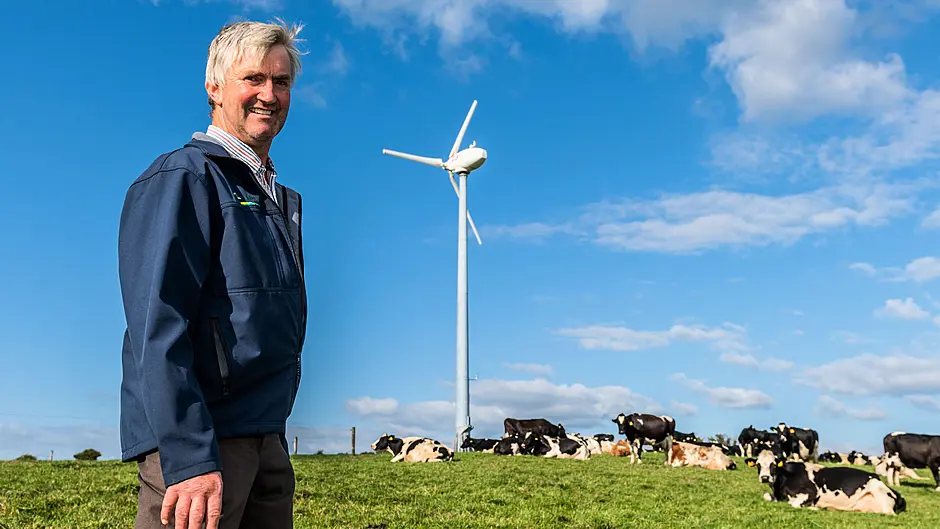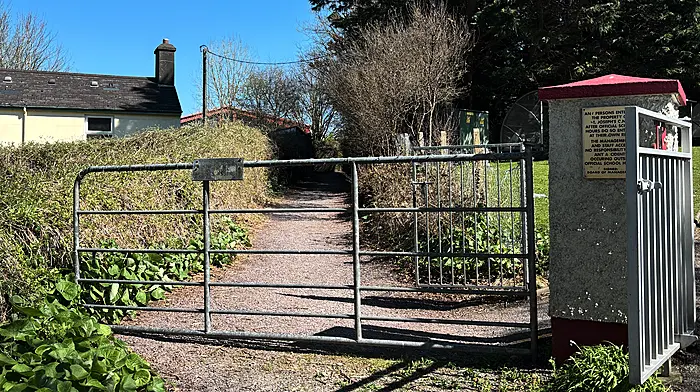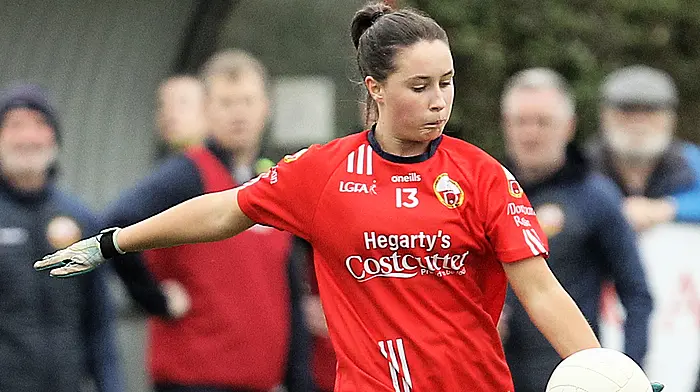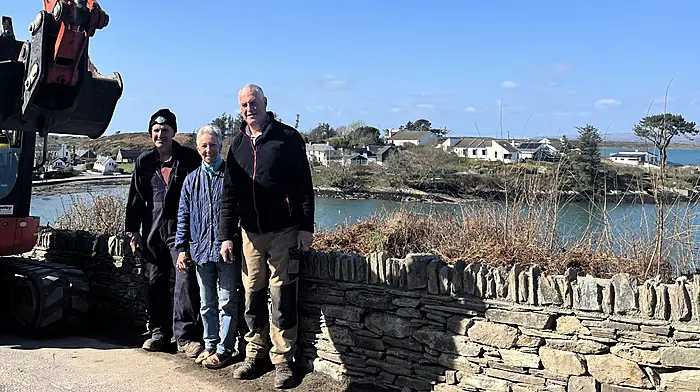Agriculture is a rapidly changing industry – perhaps now more than ever. EMMA CONNOLLY asked local stakeholders for predictions for the next 12 months, and the next five years
Grainne Hurley –Teagasc regional advisory manager, West Cork

Short term
Teagasc Agricultural Economics and Farm Surveys Department recently published the ‘Outlook 2024’ paper which is relatively positive for the year ahead for most farm enterprises.
Even though the cost inflation of 2022 and limited cost reductions in 2023 will leave overall production costs at a high level for the current year, fuel prices are expected to fall by 4% for 2024 with a significant fall in fertiliser prices.
The report projects Irish milk prices to improve by around 10% compared to 2023 and with a slight reduction in input costs, therefore net margins are predicted to increase.
Young cattle and finished cattle prices are projected to be 3% higher in 2024 and an expected gross margin increase in suckling enterprise of 8% is expected.
Sheep gross margins are forecast to increase by 9% and Sheep Improvement Scheme payments will continue to boost incomes. Irish cereal prices are also forecast to increase slightly.
Meanwhile, new technologies implemented on the monitor farms of the Carbery and Dairygold joint programmes such as feed additives to reduce methane in dairy cows and technologies to measure carbon sequestration on farm will continue to be vital for continued learnings for all West Cork farms.
Long term
Over the next five years we will see an increase in the integration of dairy and beef systems across West Cork.
James O’Sullivan near Union Hall is a Dairy Beef 500 monitor farmer. The aim of monitor farmers like James is to achieve a financially improved income from improved beef merit calves coming from dairy herds while using increased adoption of best practices on farms.
West Cork Future Beef monitor farmers Prionnsias Creedon, Clondrohid and William Kingston, Drimoleague continue to adapt best practice technologies to demonstrate how beef farmers can produce quality product as efficiently as possible.
Local climate advisors Anthony Dineen and John Crowley will continue to assist all West Cork farmers to learn how they are already contributing to emissions reductions and the key farm practices that they can implement now to further reduce emissions will that will help individuals and the farming sector in West Cork to achieve the emissions reduction target of 25% set for our industry by 2030.
West Cork has a rich tradition of successful on-farm diversification, taking advantage of the beautiful landscape and quality food production, we will see continued farm diversification here in areas such as renewable energies, rural tourism, contract rearing, farm contracting, food production as well as much more.
There has been an unprecedented increase in organic farmers nationally with over 4,000 farmers now farming organically – including just over 2,000 who entered conversion in January 2023 and this trend is expected to grow and local advisor Kevin Fitzgerald will assist West Cork organic farmers develop technically efficient farm systems.
Michael Sexton – Riverview Veterinary Group, Bandon, Ballincollig, Kinsale, Carrigaline and Clonakilty

Short term
When you talk about farming in West Cork, what you’re talking about is dairying, that’s the bedrock here and without it there’s a diminished future for West Cork farming as a business.
It’s been so wet so far this year, but I predict a more settled late spring/summer, which will be good for the grazing season.
Milk prices are dominated by global factors and are volatile, but hopefully they will stabilise this year.
Regarding trends, we’re seeing more use of sexed semen with good results, and better efficiency.
So far, the calving season has gone as seamlessly as it can and that’s a good indicator of animal health for the months to come.
The start of the main calving rush was about seven to 10 days behind where it was last year. Cases of dystocia seem to be reduced also and cows are under less pressure as a result.
Certainly, all these are helped by genomics, improved sires and sire selection over the last few years. So on a positive note, the outlook for 2024 could be quite stable, with little change.
Long-term
The demand for milk products and its constituents is growing, and so is the world’s population.
We have an advantage in that our milk comes from a grass system – only 10% of the world’s milk does – and on top of that, of the main grass-based dairy regions, we’re closest to a huge market, Western Europe unlike New Zealand, so that should be a major advantage.
However, the threats for the coming years include the age profile of farmers – the average age of dairy farmers here is 59.
Derogation is another real threat.
Full employment in the country also means there are more off-farm employment options for the sons, daughters, nieces and nephews of farmers, presenting a succession challenge.
Seasonality is a particular challenge for the recruitment and retention of labour for grass-based dairy systems.
If you can’t recruit and retain staff, that presents problems with scaling up farm enterprises. Seasonality is a challenge for service providers also.
Regarding the derogation, we had milk quotas in the 80s, now it’s nitrates, but in Ireland we do have a market of 500m people on our doorstep, and we have climatic advantages too.
I do believe there are opportunities for dairy farming going forward. For the last 100 years, dairying has been the most profitable and sustainable enterprise on family farms in West Cork and it’s about seeing ways around these challenges to chart the way forward.
Ger Lehane – IFA’s West Cork dairy rep
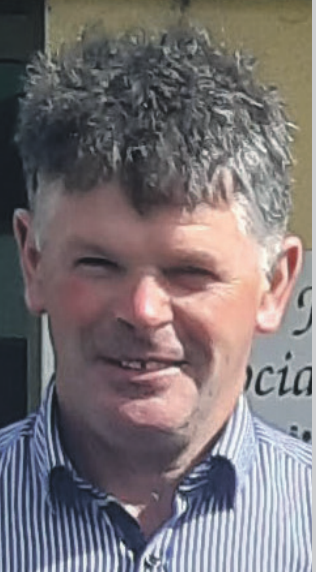
Short term
So far this year there’s been some telling statistics including cow slaughtering up 12% nationally for the first six weeks compared to last year.
That’s 1,000 cows a week and 79% of them are from dairy herds. We’re also back 14cl on January milk compared to last year.
There was a base price of 53cl in ’23, and it’s 39cl this year. A positive is that prices are recovering and markets have stabilised but we need to be getting 40c plus to make a sustainable living.
Long term
A big worry is the focus on the number of cows restricted on the grazing platform, which essentially will reduce cow numbers.
There’s also concern over the substantial increases in slurry storage required, and some farmers may decide against investing in a climate of uncertainty, particularly when they don’t know how many cows they can stock.
The rising age profile of dairy farmers is also of concern, and again there’s a fear that these farmers won’t invest if there’s no successor there.
For every cow and farm you take out of West Cork over the next few years, you won’t see them coming back.
Ultimately, it needs to be remembered that farmers are food producers, which is something that seems to be getting lost.
We export 90% of what we produce, but people depend on us three times a day for food, and policy makers should keep that in mind with a growing population.
We are only months out from EU and local elections and we hope candidates and public representatives will listen to our concerns, or else we’ll see massive changes to West Cork farming in the years ahead.
Cormac O’Keeffe –Carbery and Lisavaird chairman

Short term
Short term, I would be expecting that a recovery in dairy prices in the first half of the year should lead to an increase in milk prices.
Combined with an improvement in input costs compared to 2023 this should support dairy farm incomes.
I would hope to see the high uptake from shareholders on Carbery’s Futureproof sustainability bonus will continue, and the sustainability actions linked to that will have a measurable environmental impact as farmers take advantage of the support to take practical actions around sustainability on their farms.
Higher usage of protected urea instead of CAN will be a cost saving for farmers and reduce emissions.
Emphasis on EBI (Economic Breeding Index) and genotyping of the national herd will hopefully reward farmers that participated this spring with higher calf prices.
The commercial beef value of beef calves will be displayed in the marts for the first time this spring.
The results of the work done by our suppliers and Assap advisors over the past few years to improve water quality will hopefully start to show in better water quality over the year.
Long term
I think the future is very bright for dairy farming in West Cork. We have the most suitable climate in the world for growing grass which is the most natural feed for livestock in the world.
There’s a strong demand worldwide for our sustainably produced products which enables us to capture high-value markets.
The supply of milk is being challenged by environmental regulations in Europe and other countries.
We are unlikely to see the same growth in milk production in Ireland and worldwide as we have seen in the past few years. Strong demand and a more stable supply should keep dairy prices strong into the future.
Ronald Shorten – Dairy farmer Clonakilty, and West Cork Farming Award winner
 Dairy Farmer Ronald Shorten on his farm in Clonakilty, West Cork, Ireland. (Photo: Andy Gibson)
Dairy Farmer Ronald Shorten on his farm in Clonakilty, West Cork, Ireland. (Photo: Andy Gibson)Short term
I would be fairly positive for the coming 12 months with regards to dairy farming in the region.
Prices are improving for milk and its constituents, and the product is scarcer in the world market compared to what it has been.
Beef prices are also good, putting a good price on cows. Derogation naturally is a problem for some West Cork farmers, and a lot will have cut back numbers by the summer, with more cows being slaughtered over the coming months.
My only concern is for the tillage and sheep sector which could be in for a sharp decline if something is not done immediately to support them.
Long term
Of some concern is that the calf export market has not yet been sorted for 2025 – Holland is threatening not to take our calves, but we’re entitled to a market so that could result in legal action.
Improving our water quality is a big issue facing farmers, and will be a big part of the nitrates review, with the current derogation due to expire in 2026. There’s a very real possibility of losing the derogation entirely if all farmers don’t take immediate action and water quality does not improve.
I’d urge all farmers to join Assap (Agricultural Sustainability Support and Advisory Programme), and to embrace the help that’s on offer in this area, or risk dairy farming being decimated in West Cork.
With around 2,000 farmers here in West Cork in derogation, you could see cow numbers here reduced by a dramatic 30%. That would have a huge knock-on effect on the likes of Carbery, co-ops and other related businesses.
There’s also some talk at government level of restricting cow numbers to the milking platform – a figure of 3.5 cows per ha has been mentioned.
There’s nothing set yet, but that would impact intensive farmers. The carbon footprint is another area that is of great concern.
While farming is one of the few sectors that seems to be making any progress and is getting very little acknowledgement for it, a lot more needs to be done.
What is very frustrating is that farmers invest in solar panels and plant trees but get no credit for it in their carbon footprint.

